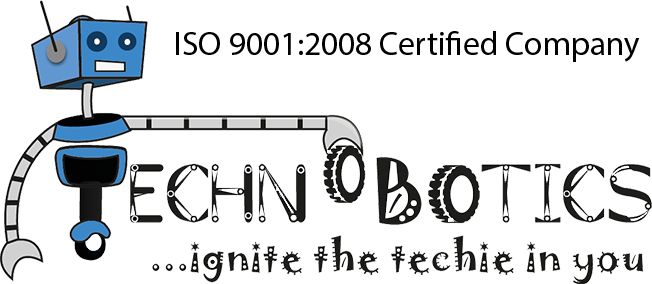The world is undergoing a technological revolution, and robotics is rapidly transforming numerous industries. Equipping students with the necessary skills to navigate this evolving landscape is crucial. Integrating the robotics curriculum for elementary offers many benefits, fostering a generation of creative problem-solvers, critical thinkers, and tech-savvy individuals.
Advantages Of Adopting Robotics Curriculum for Elementary
- Enhancing STEM Education:
- Interdisciplinary Learning:
School robotics curriculum inherently necessitates applying science, technology, engineering, and mathematics (STEM) principles. Students gain practical knowledge by designing, building, and programming robots, solidifying their understanding of these core subjects.
- Real-World Applications
The school robotics curriculum education transcends theoretical learning, enabling students to apply STEM concepts to tangible projects. This fosters a deeper understanding of how these subjects interconnect and their relevance in real-world scenarios.
- Developing 21st Century Skills:
- Critical Thinking and Problem-Solving
Robotics projects often involve overcoming challenges and troubleshooting technical issues. Students develop critical thinking skills by breaking down problems into smaller steps, devising solutions, and experimenting with different approaches. To get the best coding school, type the term “coding school near me”.
- Creativity and Innovation
The robotics curriculum for elementary schools encourages students to think outside the box and design robots that address specific needs or challenges. The best coding school near me fosters a culture of creativity and innovation, empowering them to become future inventors and problem-solvers.
- Collaboration and Teamwork
Robotics homeschool curriculum projects are frequently collaborative endeavors, requiring effective communication, teamwork, and task management among team members. Students learn to collaborate towards a common goal, fostering essential social and interpersonal skills.
- Building a Strong Foundation for Future Careers:
- Exposure to Technology
Robotics homeschool curriculum introduces students to the fundamentals of coding, electronics, and mechanical engineering. This gives them a strong foundation for pursuing careers in various STEM fields, including robotics, automation, and artificial intelligence.
- Increased Interest in STEM Fields
Robotics can spark a passion for STEM subjects, motivating students to delve deeper into these fields. This can increase enrollment in STEM-related courses and potentially future careers in these high-demand sectors.
Addressing Challenges and Considerations:
- Cost and Resources: Implementing a robotics curriculum may require an investment in equipment, software, and qualified personnel. Schools must explore cost-effective solutions, seek grants, and potentially collaborate with private organizations to address these challenges.
- Teacher Training: Teachers must possess the knowledge and abilities to mentor students in robotics projects. It is imperative that educators have access to professional development opportunities to successfully incorporate robots into the curriculum.
Choosing the Right School Robotics Course: A Guide
Robotics is rapidly evolving, and schools are increasingly offering courses to introduce students to this exciting field. Selecting the most suitable course requires careful consideration to ensure it aligns with your interests and experience level. Here’s a breakdown of key factors to guide your decision:
- Course Level and Learning Style:
- Beginner: Look for introductory courses emphasizing fundamental concepts like robot anatomy, basic programming languages like Python or Scratch, and sensor applications. These courses typically utilize user-friendly robotics kits like Lego Mindstorms or VEX.
- Intermediate: Having grasped the basics, students can progress to courses involving more complex programming, incorporating aspects of artificial intelligence (AI) and computer vision. These might involve building robots with advanced capabilities like line following or obstacle avoidance.
- Advanced: For students with a strong foundation, advanced courses delve into areas like robot design, kinematics, dynamics, and control systems. They might involve working with sophisticated robotics platforms and open-source software.
- Focus and Project Orientation:
- Competition-oriented: These courses train students for competitions like VEX Robotics or FIRST Robotics. They offer intensive design, programming, and teamwork training, preparing students for the competitive environment.
- Project-based learning: These courses emphasize hands-on experience through individual or group projects. Students brainstorm ideas, design robots to address specific challenges and refine their creations through trial and error.
- Exploration-oriented: These courses provide a broader introduction to robotics, covering various applications in healthcare, manufacturing, and space exploration. They might involve guest lectures from industry professionals and field trips to relevant facilities.
- Facilities and Resources:
- Robotics Lab: A well-equipped lab is crucial for hands-on learning. Look for a course that provides access to a dedicated space with tools, equipment, and various robotics kits catering to different skill levels.
- Software and Hardware: Inquire about the software and hardware platforms used in the course. Popular options include Robot Operating System (ROS), Arduino microcontrollers, and industry-standard simulation software.
- Technical Support: Access to qualified instructors or mentors who can guide and troubleshoot challenges is essential.
- Additional Considerations:
- Class Size and Schedule: Smaller classes allow for more personalized attention and facilitate effective collaboration. Consider your schedule and choose a course that aligns with your other commitments.
- Cost and Registration: Course fees vary depending on the program duration, materials provided, and competition participation. Be sure to factor in any additional costs associated with robotics kits or software licenses.
- Student Reviews and Course Reputation: Research online reviews from previous students and inquire about the course’s reputation within the school or community.
By carefully considering these variables, you may select a robotics course at your school that fits with your interests, learning preferences, and long-term goals. Remember, the most important aspect is to find a course that fosters your passion for robotics and equips you with the necessary skills to excel in this dynamic field.y
Bottom Line
In conclusion, incorporating a robotics curriculum for elementary schools offers many advantages for students. It fosters a comprehensive understanding of STEM subjects, cultivates essential 21st-century skills, and ignites a passion for innovation and technological exploration. By addressing potential challenges through strategic planning and resource allocation, schools can leverage the power of robotics education to prepare students for the demands of an increasingly technology-driven world.


